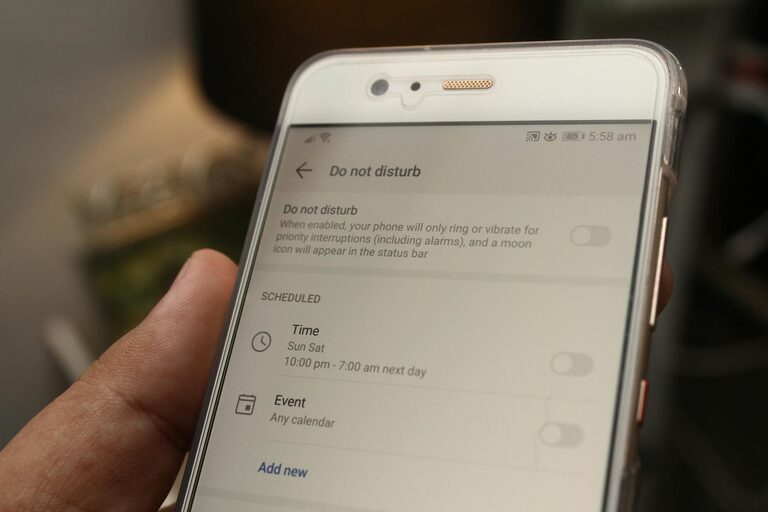In today’s digital world, notifications from apps, emails, and social media constantly vie for our attention. While these alerts can be helpful, an overload of notifications can disrupt focus, increase stress, and impact our productivity. Setting clear boundaries with your notifications is an important step toward regaining control of your time and mental space.
In this post, we’ll explore practical tips to manage your notifications effectively and maintain a healthy balance between staying informed and avoiding distractions.
Why Setting Boundaries with Notifications Matters
Notifications are designed to capture our attention instantly. However, frequent interruptions can fragment your focus, leading to:
– Reduced productivity
– Increased stress and anxiety
– Difficulty in completing important tasks
– Disrupted sleep patterns
By setting boundaries with your notifications, you can create a more mindful and controlled interaction with your devices.
Tips for Setting Boundaries with Notifications
1. Audit Your Notifications
Start by reviewing which apps and services send you notifications. Ask yourself:
– Are all these notifications necessary?
– Which ones require immediate attention?
– Which can wait until I check them manually?
Go through your device settings and disable non-essential notifications. This proactive step reduces noise and helps prioritize what really matters.
2. Use Do Not Disturb and Focus Modes
Most smartphones and computers have built-in features like “Do Not Disturb” or “Focus Mode.” Use them strategically:
– During work hours or when concentrating, enable Do Not Disturb to block notifications temporarily.
– Schedule these modes for regular use, such as during meetings or designated focus periods.
– Customize exceptions to allow calls or alerts from important contacts.
These modes help you maintain uninterrupted periods for high-focus tasks.
3. Customize Notification Settings by App
Not all notifications are created equal. Some apps allow you to tailor what types of alerts you receive. For example:
– Social media apps may let you choose notifications for direct messages only, rather than all likes or comments.
– Email apps often allow filtering notifications based on sender or subject keywords.
Taking time to adjust these settings can drastically reduce unnecessary interruptions.
4. Set Specific Times to Check Notifications
Constantly checking notifications can create a habit of distraction. Instead:
– Allocate specific times in your day to review messages and updates.
– Turn off app badges and sound alerts to avoid reflexively opening your phone.
– Use tools or planners to remind yourself to check notifications intentionally.
This approach fosters mindfulness and helps prevent distractions from ruling your day.
5. Silence Notifications During Sleep
Notifications can disrupt your sleep, even if you don’t actively check your phone. To protect your rest:
– Enable “Do Not Disturb” or Sleep Mode during your bedtime hours.
– Consider turning off notifications from non-essential apps overnight.
– Keep your device away from your bed or use “Airplane Mode” if possible.
Better sleep leads to improved mood, focus, and overall health.
6. Limit Notifications at Work
If you work in an environment that allows some flexibility:
– Inform colleagues or clients about your availability times to set communication expectations.
– Use communication platforms’ status features like “Busy” or “Away.”
– Mute or customize notifications for apps during deep work sessions.
This helps maintain professional boundaries and enhances work performance.
7. Regularly Reassess and Adjust Your Settings
Your needs and priorities can change over time. Make it a habit to:
– Review your notification settings every few weeks or months.
– Remove notifications from apps you no longer use.
– Update preferences as your schedule or responsibilities evolve.
Ongoing management ensures your notification boundaries continue to serve you well.
Tools and Apps to Help Manage Notifications
Several tools can assist in managing notifications:
– Focus Assist (Windows)/Focus Mode (Mac): Block notifications during focus time.
– Forest or Focus@Will: Encourage concentration with timers blocking distractions.
– Notification Managers: Apps that bundle notifications and allow batch processing.
– Email Filters and Rules: Automatically sort or mark emails to reduce alert noise.
Explore and try out what suits your style and needs.
Final Thoughts
Setting boundaries with notifications is a simple but powerful way to improve your focus, reduce stress, and reclaim your time. By auditing your alerts, using built-in focus tools, scheduling notification checks, and protecting your sleep, you can create a healthier relationship with technology.
Remember, the goal is not to cut off all notifications but to make them work for you – supporting your priorities instead of disrupting them.
Try implementing one or two of these strategies today and notice how it changes the way you interact with your devices and your day. Small changes can lead to big improvements in your digital wellbeing.

